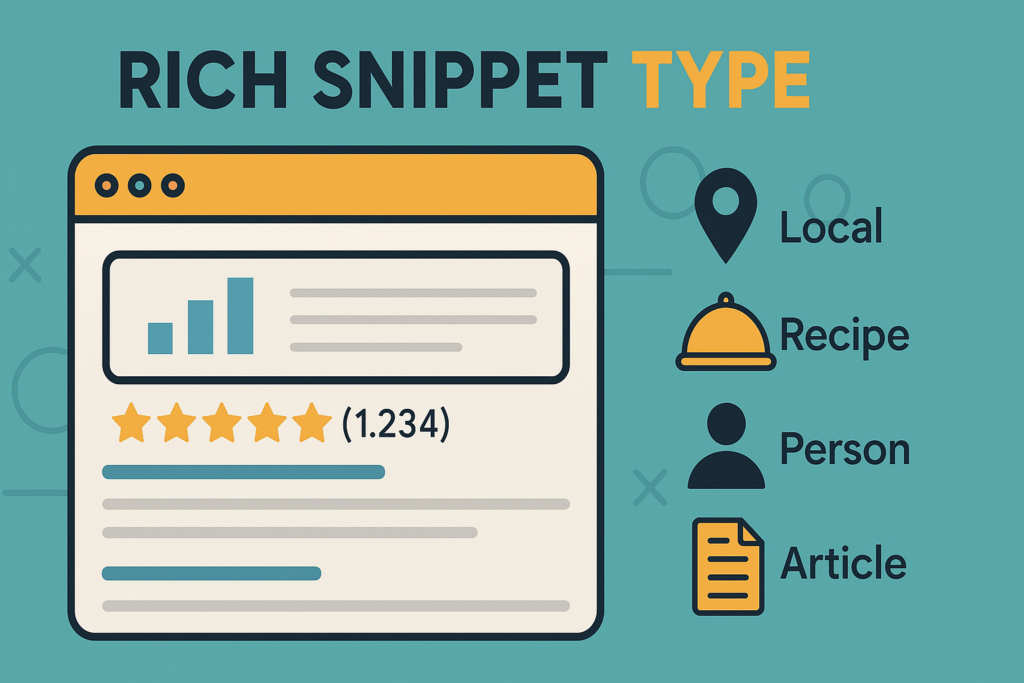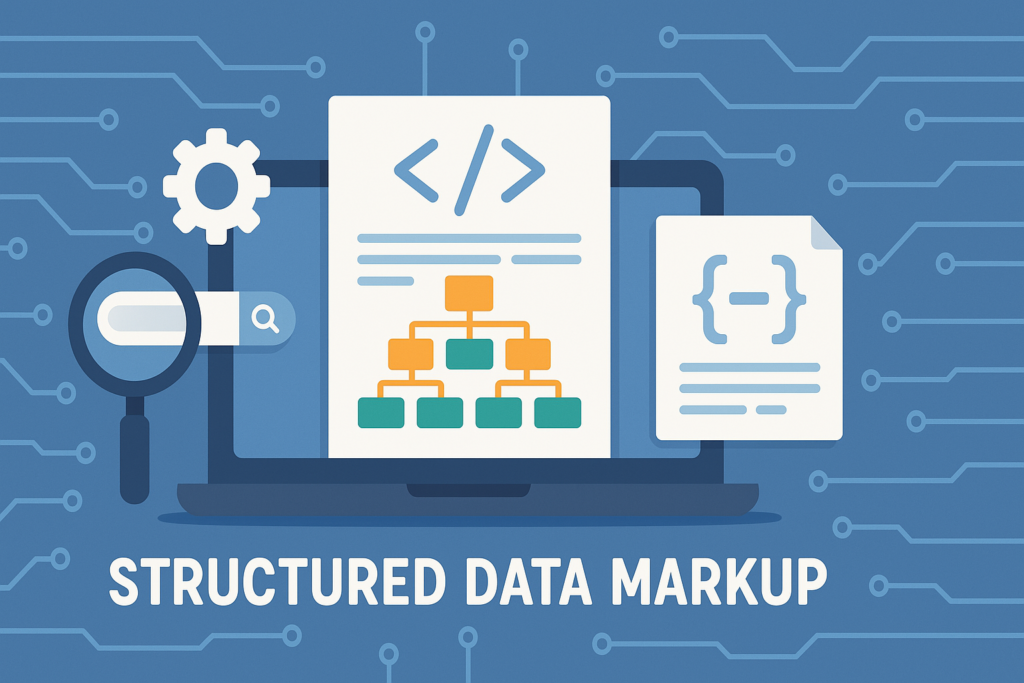
In the digital era, businesses must have an online presence to succeed. However, merely having a website is insufficient to attract customers. Optimizing your website to rank higher in SERPs is essential to stand out. Rich snippets are an effective way to improve your website’s ranking.
These small pieces of code provide additional information about your website or business, making your website more appealing to potential customers.
By incorporating rich snippets, you can enhance your website’s appearance in search results and increase the likelihood of attracting potential customers.
This blog will explore SEO rich snippets, how they impact SEO, and how you can implement them on your website. We will also discuss some best practices for using rich snippets to help you get the most out of them.
So, without further ado, let’s dive into the world of SEO rich snippets.
What Are Rich Snippets?
Rich snippets are structured data markups that website owners can add to their HTML code to provide search engines with more information about their content.
This extra information appears in search engine results pages (SERPs) and is intended to make it easier for users to find the information they seek.
What Do Rich Snippets Look Like?
Instead of just a plain result, a rich snippet might show:
- ⭐ Ratings & Reviews (e.g. 4.8 stars from 120 reviews)
- 📅 Event Dates
- 🍽️ Recipe Info (cook time, calories, ingredients)
- 🛍️ Product Details (price, availability)
- 👤 Author Info
- ❓ FAQs with drop-down answers
Benefits Of Rich Snippets
Rich snippets offer numerous benefits to website owners who implement them on their websites.
Here are five key benefits of using rich snippets:
Improved Search Engine Visibility

Rich snippets provide additional information about a website’s content, making it easier for search engines to understand what a particular page is about. This increased understanding can lead to higher search engine rankings and more visibility in search results.
Increased Click-Through Rates
Rich snippets give users more information about a particular page before they click it. This extra information can help users determine if a page is relevant to their needs, resulting in higher click-through rates (CTR) and more traffic to a website.
Enhanced User Experience

Rich snippets can improve the user experience by providing users with the information they need without requiring them to visit a website. This can lead to higher user satisfaction and increased website content engagement.
Competitive Advantage
Implementing rich snippets can give a website a competitive advantage by making its search results stand out from competitors. This can lead to more clicks and more traffic, which can ultimately result in higher sales and revenue.
Better Targeting

Rich snippets can help website owners better target their content to specific search queries. By using structured data markup to provide additional context about their content, website owners can improve the relevance of their website’s content to specific search queries, resulting in more targeted traffic and better conversion rates.
Examples of Rich Snippets

- ⭐ Reviews: Shows star ratings, reviewer names, and total votes
e.g., 4.8 ★★★★★ (230 reviews) - 📋 Recipes: Displays cooking time, ingredients, calorie count
e.g., 25 min | 300 cal | 5 ingredients - 📅 Events: Shows event dates, locations, and availability
e.g., March 29 | Madison Square Garden | 7 PM - 📚 Articles: May include the author, publish date, or category
- 🛒 Products: Displays price, availability, and product ratings
e.g., $29.99 | In Stock | 4.6 stars - ❓ FAQs: Expandable question and answer pairs right in the search
How To Implement SEO Rich Snippets
Implementing rich snippets on your website can be challenging if you don’t have any coding experience. However, there are several methods you can use to implement rich snippets on your website, and we’ve outlined some steps to get you started.
Step 1: Choose The Right Rich Snippet Type

The first step to implementing rich snippets is determining which type will be most beneficial for your content. As discussed earlier, there are several types of rich snippets, including reviews and ratings, events, recipes, products, and people.
Once you have determined which type of rich snippet is most appropriate for your content, you can move on to the next step.
Step 2: Add Structured Data Markup To Your Website

Once you have determined which type of rich snippet you want to use, you’ll need to add structured data markup to your website. This markup provides search engines with information about your content and helps them understand how it should be displayed in search results.
For example, if you want to implement a review and rating rich snippet, you’ll need to add the appropriate structured data markup to the HTML code of your web page. The markup might include information such as the product name, rating, and number of reviews.
Step 3: Test Your Rich Snippet

After you have added structured data markup to your website, you’ll need to test your rich snippet to make sure it’s working correctly.
Google provides a free testing tool called the Structured Data Testing Tool that you can use to test your rich snippet. Simply enter the URL of your web page into the tool, and it will analyze your markup and provide feedback on any errors or issues.
Step 4: Monitor Your Search Engine Results
Once you have implemented your rich snippet, you’ll want to monitor your search engine results to see how it’s performing. Check your website’s analytics to see if there has been an increase in traffic or a change in your website’s search engine ranking.
If your rich snippet isn’t performing as well as you’d like, consider making changes to your structured data markup to improve its effectiveness.
Step 5: Keep Your Rich Snippets Up-To-Date
Finally, it’s essential to keep your rich snippets up-to-date. This means regularly updating your structured data markup to ensure that it accurately reflects the content on your website.
For example, if you’re using a product rich snippet, you’ll want to update the product’s name, price, and other details as needed.
It’s also important to note that different search engines may require different types of structured data markup.
For example, Google uses Schema.org markup, while Bing might use its format. Be sure to check the requirements for each search engine to ensure that your rich snippets are compatible.
Google’s point on rich snippets
Google has also stated that rich snippets do not directly affect a website’s search engine ranking. However, they can indirectly improve rankings by increasing click-through rates and user engagement, which are factors that can influence search engine algorithms.
Google has provided guidelines for webmasters on implementing rich snippets. They recommend using structured data markup to provide accurate and relevant information about the content on a webpage.
Webmasters should also avoid using misleading or spammy content in rich snippets, as this can negatively impact the user experience and lead to penalties from Google.
Overall, Google sees rich snippets SEO as a valuable tool for improving the user experience and providing more informative search results. By implementing rich snippets according to Google’s guidelines, webmasters can improve their website’s visibility and engagement in search results.
FAQs
Q1. What Is The Difference Between Rich Snippets And Featured Snippets?
A: Rich snippets provide additional information about a website’s content in search engine results, while featured snippets are a type of rich snippet that provides an answer to a specific question directly in the search results.
Q2. Are All Types Of Content Eligible For Rich Snippets?
A: No, not all types of content are eligible for rich snippets. Google provides guidelines on the types of content that are eligible for rich snippets, and website owners should ensure that their content meets these guidelines before implementing structured data markup.
Conclusion
Hope this article has helped you understand what SEO Rich snippets are. Then why don’t create one for your website and start driving results?
If you still face any difficulties with the topic. Then feel free to leave your questions in the comment section. We will be happy to help you.
Thanks for reading 🙂


